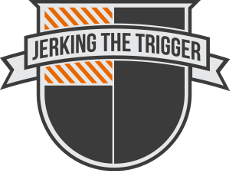The vast majority of modern combat rifles make use of optics. Improvements in technology have made it possible to have optics that are extremely reliable and durable. In this fourth installment of our discussion about modernizing the AK, we will be taking a look at optics and mounts.
There was a time when mounting an optic on your AK would draw ridicule from hordes of AK traditionalists. Now, savvy shooters have realized that optics, like red dot sights (RDS), actually make their weapon more efficient and effective. Many are surprised to find just how accurate a quality AK can be after they shoot with an optic the first time.

Even an Aimpoint CompM2 can be co-witnessed on an Ultimak M1-B.
Mounts
This is a bit of a golden age for AK accessories. There are several high quality options on the market that allow shooters to mount a tremendous number of quality optics. The mount you choose will likely be dependent on the optic that you choose and the type of rifle that you own.
RS Products is a new manufacturer of AK optic mounts. Their new AKM mount allows AK shooters to mount an Aimpoint (or similar red dot sight) directly over the action. The mount sits low enough that the iron sights can be used through the Aimpoint and it is adjustable from side to side so that it can be centered over the AK. This is a really excellent option. You can also look for other optic mounts from RS Products in the future.
The Dog Leg Scope Rail from Texas Weapon Systems is a very clever optic mounting system. It replaces the standard top cover with a railed top cover that locks into the rear sight and a special cam lock release button. It is a very solid system that sits low enough to provide a proper cheek weld and still allows normal field stripping. It also allows the mounting of a small back up iron sight that really extends the sight radius of the AK. The Dog Leg Scope Rail would be a great choice for mounting a compact variable magnification optic.
The Ultimak M1-B is a tried and true option that has been on the market for several years now. It is my optic mount of choice because it sits low enough to co-witness an Aimpoint and is also a great place to mount a white light. Some users have also used the Ultimak M1-B to mount “scout” style scopes. It is a very durable and relatively light weight mount.

An Ultimak M1-B can serve as an optic mounting platform as well as a place to mount a white light.
Optics
In spite of the AK traditionalists who repeat the same “Keep that crap off my AK!” dogma over and over without critical thought, many shooters are finding that there is a place for optics on an AK. Shooting iron sights requires the shooter to align the target, the front sight, and the rear sight. The shooter must focus on the front sight. An optic like an RDS allows the shooter to align only the target and the optic’s reticle. The shooter can focus on the target. Modern optics promote situational awareness, accuracy, speed, and are durable enough to be relied upon.
I use Aimpoints on my AKs and I highly recommend them. The newest micro Aimpoints add barely any weight to the rifle and greatly enhance the function of the rifle. Quality RDS, like Aimpoints, are extremely durable, reliable, and offer battery life that is measured in years, not hours. Aimpoints and other RDS really shine from 0-200 yards which is an excellent match to the capabilities of the AK. 300 yards hits are also very possible with an AK/Aimpoint combination.
Mounts that place the optic over the receiver like the Dog Leg Scope Rail open up the possibility of using a low power variable magnification optic like the Trijicon TR21 Accupoint or similar. The lowest power setting on this style of optic lets users engage close targets effectively, while the higher magnification settings give the shooter more confidence at extended ranges.

The Ultimak M1-B has plenty of space for an Aimpoint micro and white light.
Conclusion
There is no reason to ignore combat optics unless you are an AK collector. If you are an AK shooter, especially one who trains to use their AK to defend their life, you can gain a tremendous amount of functionality and efficiency by mounting a quality optic. Choose the optic that you want, find a mounting method that is suited to that optic, and then train hard.
 LuckyGunner.com is a great place to buy ammo and a great friend to this blog. They are hosting the voting for the 2011 Gunnie Awards to “recognize the best gun bloggers & websites for their contribution to firearm news, politics, and law over the past year.” The awards are based on voting by readers like you.
LuckyGunner.com is a great place to buy ammo and a great friend to this blog. They are hosting the voting for the 2011 Gunnie Awards to “recognize the best gun bloggers & websites for their contribution to firearm news, politics, and law over the past year.” The awards are based on voting by readers like you.








